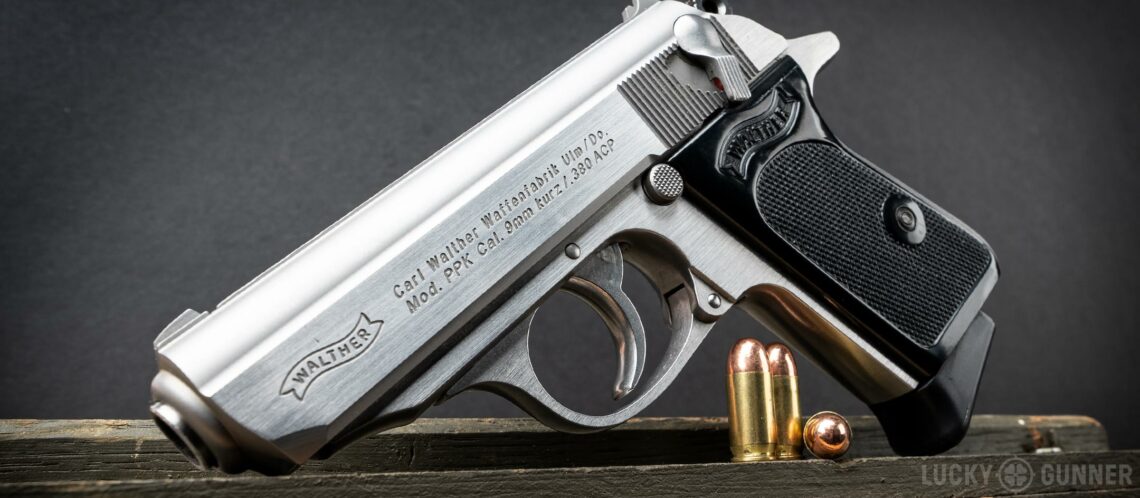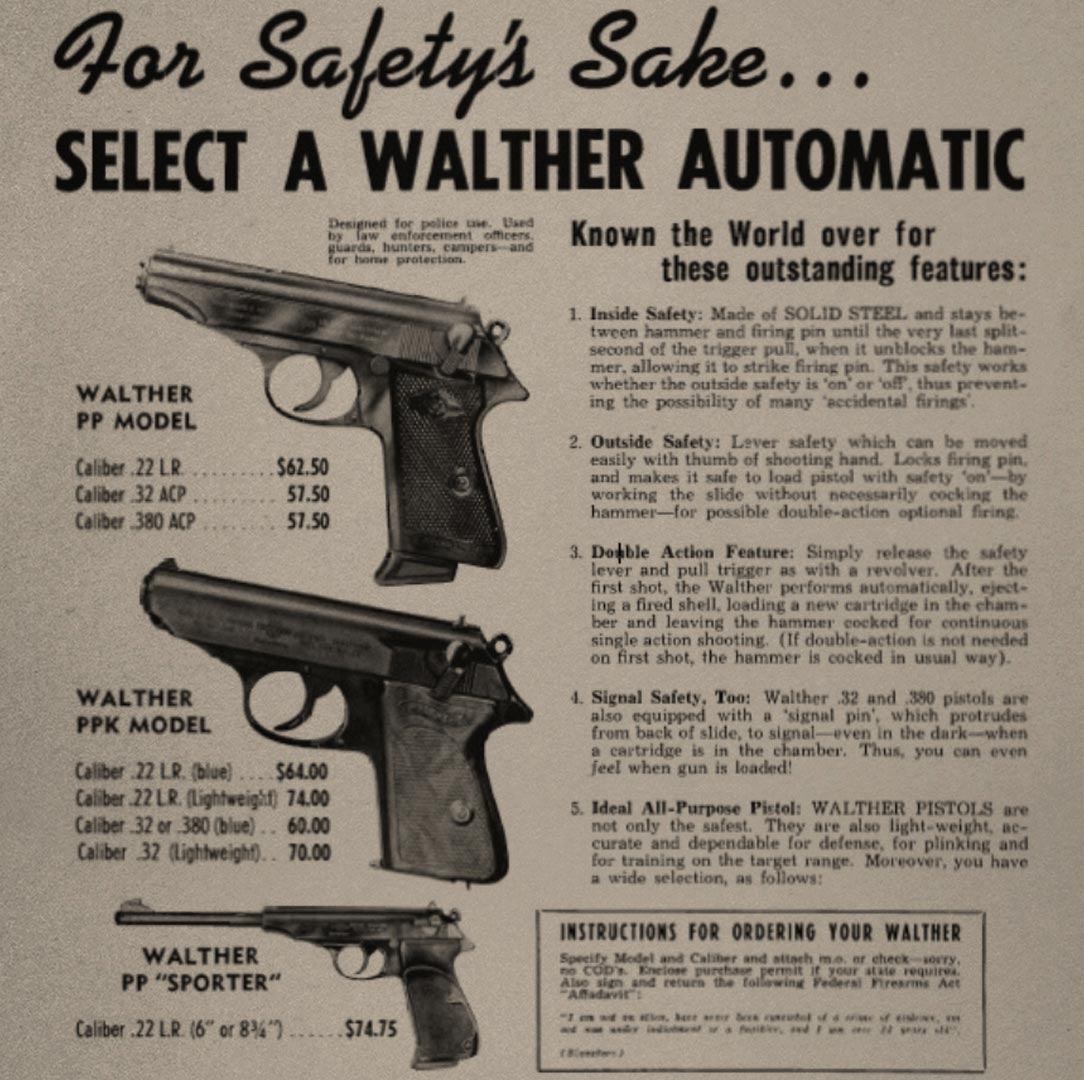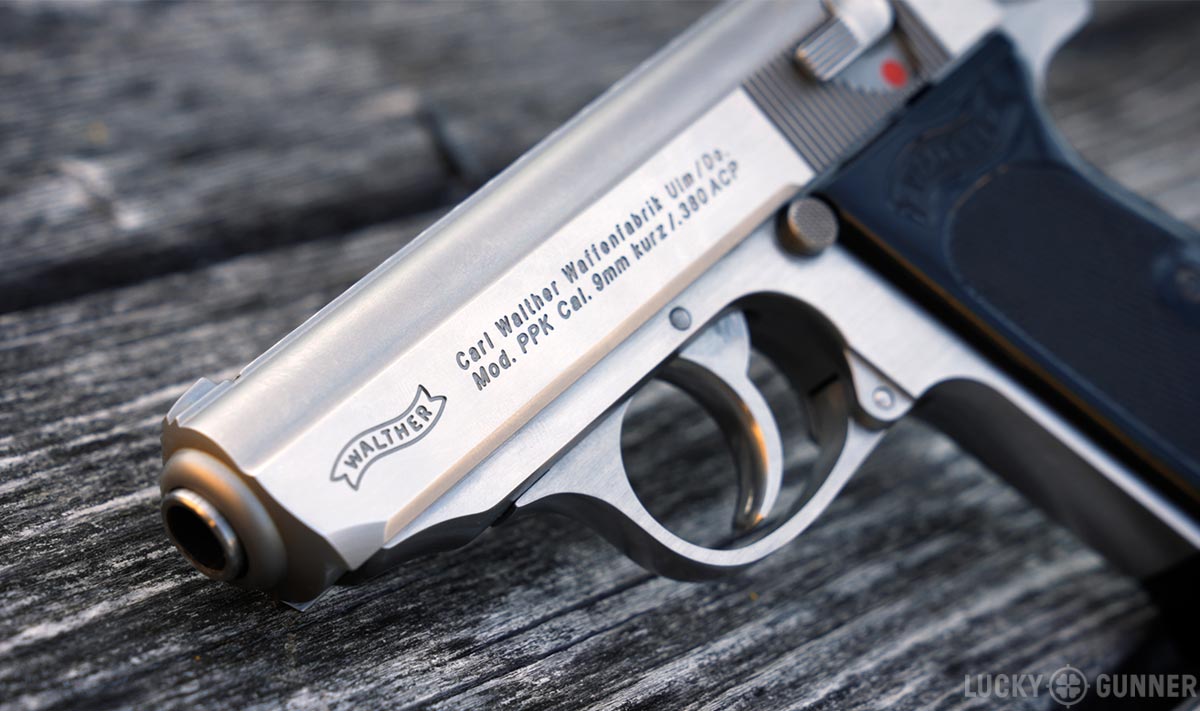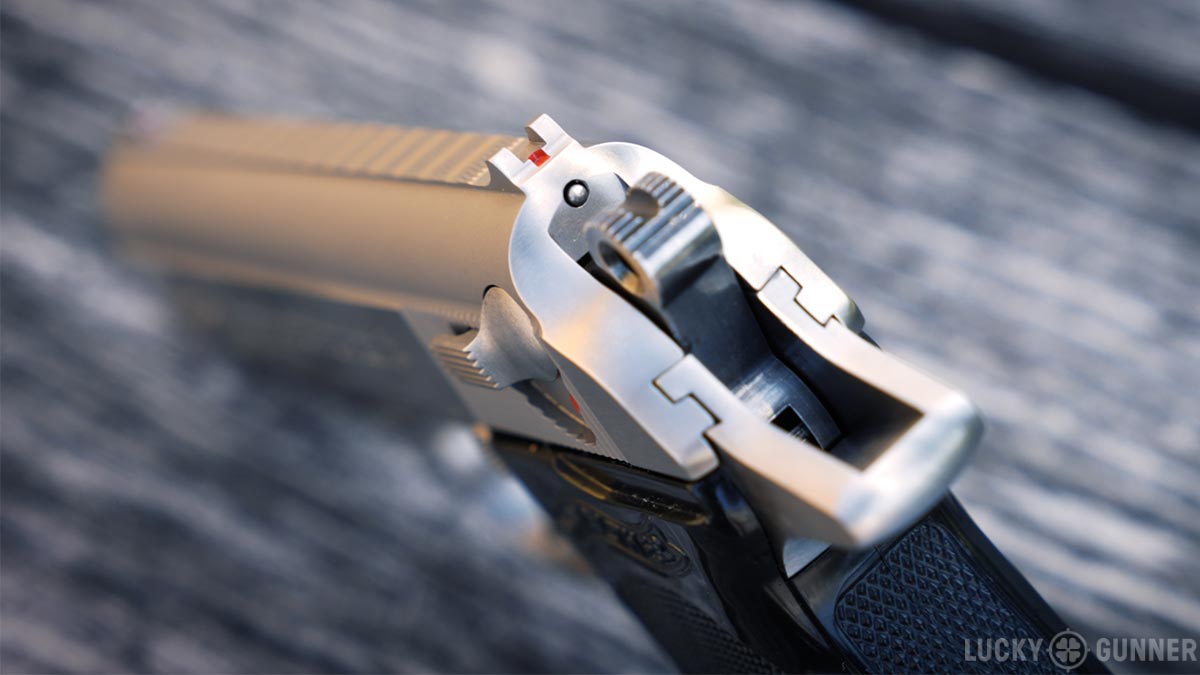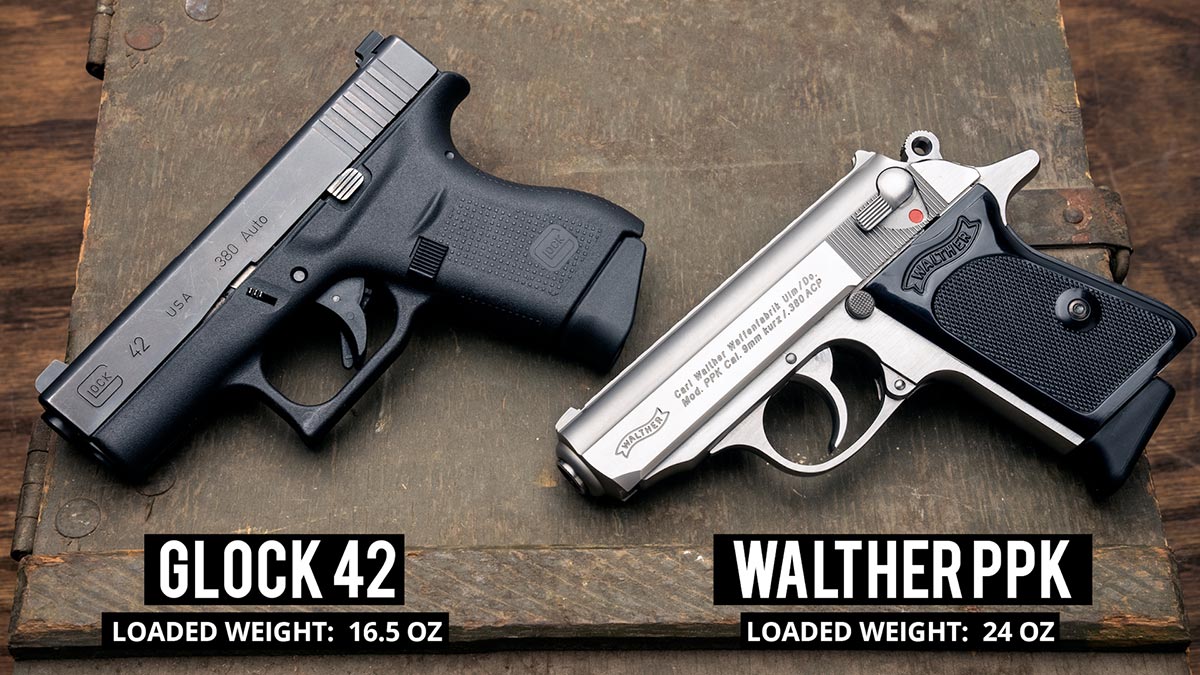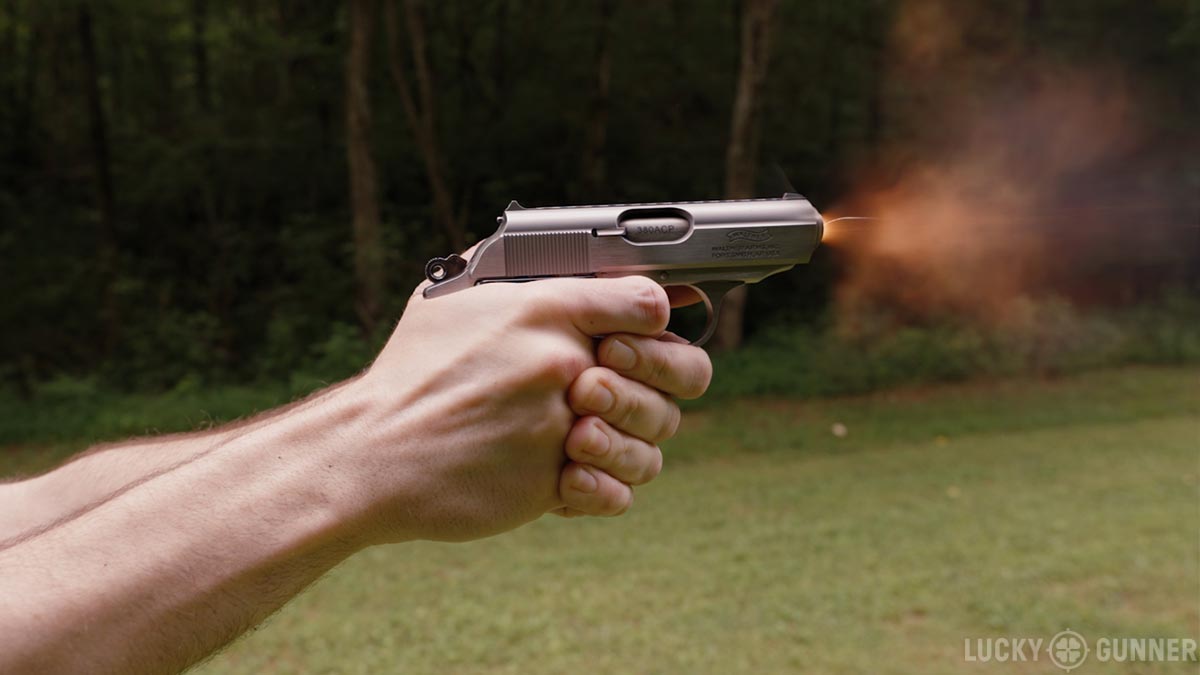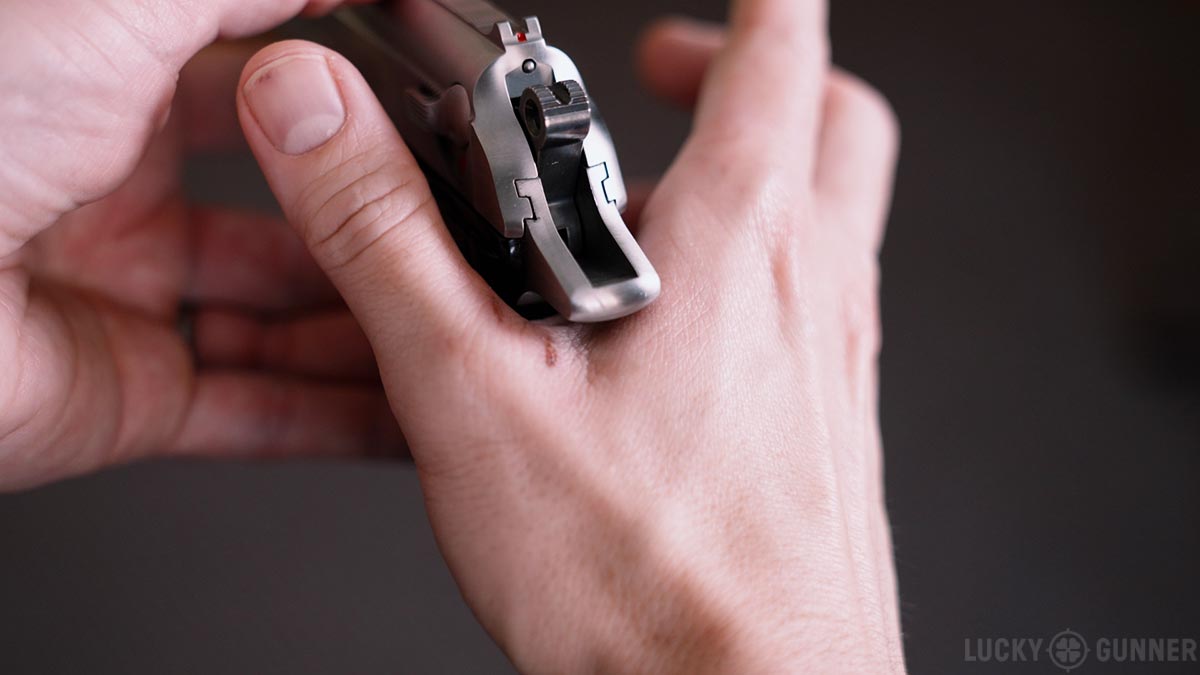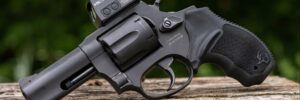It’s pretty. It looks great on the big screen. But compared to more modern pistols, the Walther PPK is a horrible choice for self-defense and concealed carry. It’s not even a fun plinker. Unless you’re a collector or an avid James Bond enthusiast, there are much better options available.
Details are in the video below, or scroll down to read the full transcript.
Hey everybody, I’m Chris Baker from LuckyGunner.com and I really do not care for the Walther PPK. I know a lot of people are fond of the PPK for various reasons. It’s an exceptionally nice looking design. It’s got some historical significance. And, of course, it’s best known for its association with a certain fictional, mildly psychopathic, English government employee. If you own a PPK for one of those reasons, I’m not trying to rain on your parade. I’m glad you like it and I hope it continues to bring you much joy.
But I feel duty-bound to make this video, because I know that somewhere out there, right now, someone wants to buy a handgun for personal protection or to learn how to shoot. Maybe this will be their very first firearm purchase, period. And for whatever reason, the Walther PPK is at the top of their list. If that is you, then, sir or madam, I really need to make sure you know that in the year 2021, the Walther PPK is a horrible choice for any practical purposes. Yes, that is only an opinion, but it’s one shared by just about anyone who really takes pistol shooting seriously. Today I want to talk about why.















History and Background of the Walther PPK
Most of the guns Walther makes today are actually fairly highly regarded. They even make a couple I would call exceptionally good. And, like many German-designed firearms, when the PPK first came out, it also fell into that exceptional category. It was a unique, high-quality pistol that filled an important role. But, over the last 90 years, there have been some major advancements in the design and technology that goes into concealable handguns. Today, I would not carry a pistol that’s been virtually unchanged since 1931 any more than I would rely on a car from 1931 as a daily driver.
The PPK was initially marketed to the European law enforcement market as a more compact version of the Walther PP, or “Police Pistol.” The PPK has been available in .22 LR, .32 ACP, and .380 ACP. Today, we typically associate it with .380, but early on, .32 was actually the most common chambering.
Long before the PPK made an appearance in any spy films or books, it had already made a major impression on the firearms industry. The PPK was among the first commercially successful double-action/single-action pistols. It had several mechanical and aesthetic design elements that were copied and reused for decades, both by Walther and their competitors.
It was also one of the first semi-autos to really define the size category we now call “sub-compact.” It’s much smaller than a service sized sidearm, or even a compact pistol. But it’s also a bit larger than what they used to call a vest pocket pistol. It’s thin and concealable, but it’s got enough grip to hang onto to make it shootable.
The PPK didn’t make much of an impression in the US until GIs started bringing them home from Europe after World War II. They were fairly popular for a few years after the war, and the PPK probably would have faded into history shortly after and I would not have had to make this video. But then, along came some movies about that make-believe womanizing limey spy and demand for the PPK has endured ever since.
Unfortunately for American secret agent cosplay enthusiasts, The Gun Control Act of 1968 banned the importation of certain small, concealable pistols, including the PPK. Walther had to slightly lengthen the grip in order to comply with the new “sporting purposes” requirements. That variant is known as the PPK/S. Since the 70s, a few different companies have imported the PPK/S. Both the PPK/S and the original PPK design have also been manufactured and sold here in the US under license. The quality of those guns has been hit or miss over the years.
Since 2018, Walther has produced PPKs in their own US-based factory in Fort Smith, Arkansas. For the most part, these new guns are not much different than the originals. They have some minor improvements to make them a little safer and more reliable. The grip tang or beavertail is a little longer. The drift-adjustable dovetail rear sight has been replaced with a simpler fixed rear sight notch. Right now, it’s only being made in .380 ACP. Otherwise, it’s more or less the same pistol that Walther first rolled out back in 1931.
And that’s bad. Because we can do a lot better today.
So What’s Wrong With The PPK?
It’ll be easier for me to explain why the Walther PPK is suboptimal if I use a modern pistol for comparison. I’m going to use the Glock 42 for that. It’s a good overall carry pistol, but it’s certainly not the only, or even necessarily the best option. It’s just one of dozens of options that are superior to the PPK. I chose this particular pistol because it has roughly the same outer dimensions as the PPK, and it has the same ammo capacity and fires the same cartridge: 6+1 rounds of .380 ACP. In all other respects outside of a beauty contest, the Glock 42 completely outclasses the PPK.
Let’s start with an easy one: weight. The PPK has a steel slide and a steel frame. Most pistols these days have an aluminum or a polymer frame. Steel guns are heavy. And despite whatever Boris the Blade may have told you, that does not make them more reliable or more durable than the lightweight alternatives. Fully loaded, the PPK weighs 24 ounces. The Glock 42 weighs a third less than that at 16.5 ounces. That is a noticeable difference for something you keep strapped to your waist for several hours a day.
You might think that the heavier weight would be a good thing in a small gun. Maybe it’ll help absorb some of that recoil and make the gun softer shooting. Unfortunately, that is not the case. The PPK has what is called a straight blowback action. The Glock 42, along with the vast majority of modern pistols, is recoil operated. I’m not going to go into the details of what all that means. If you want to know more, I did a video explaining the details a couple of years ago. Basically, straight blowback pistols have significantly more felt recoil than recoil-operated pistols.
So, even though the PPK is fairly heavy and the .380 cartridge is relatively mild, the Walther has about as much felt recoil as a modern subcompact 9mm pistol. It’s manageable, but it’s definitely not what I would put in the hands of an inexperienced shooter. The .22 and .32 caliber versions of the PPK are said to be much more enjoyable to shoot. But those are no longer sold in the US and used copies tend to be prohibitively expensive.
What really makes the .380 PPK unpleasant to shoot is actually the combination of the snappy recoil and poor ergonomics. The correct way to grip a modern handgun is with the web of your primary hand as high up on the backstrap as you can possibly get it. A high, aggressive grip is key for controlling recoil. However, if you grip the PPK this way, you will likely end up with what is known as slide bite. That’s where the slide cuts or rubs against the thumb when the gun cycles. After less than 100 rounds at the range with the PPK, I ended up with, not just slide bite, but… I don’t know what you’d call it, beavertail bite? The corner on the beavertail or tang here is so sharp that it cut my hand in a second place in addition to the slide bite.
The reason the later PPKs have this elongated tang to begin with was to address complaints about hammer bite. But overall, the PPK is still an ergonomic disaster. There are sharp edges and corners everywhere. There is zero texture on the front strap. The mag release is in an awkward place. Neither the mag release or the safety/decocker are ambidextrous.
After wrestling with the PPK, shooting the Glock 42 is like diving into a clear blue lake on a really hot day. It’s got about half as much recoil. There’s nothing pinching, poking, or cutting me. It never feels like a chore to practice with it. I’m not saying the ergonomics are perfect for everyone. It’s probably not ideal if you have large hands. It could use some more aggressive grip texture. The slide release is not ambidextrous. But at least it has a slide release, which is something the PPK lacks. For most people, it is just a very pleasant little gun to shoot. The PPK is not.
[EDIT: For those of you who like the idea of the Glock 42, but prefer the added safety of the PPK’s DA/SA action, you may be interested in the Striker Control Device that I wrote about a while back. As a fan of DA/SA pistols myself, the addition of an SCD turns a Glock into a gun I would actually consider carrying.]
The Price Is… Not Right
I have plenty of other complaints about the PPK. Like the ridiculous 13 to 15-pound double-action trigger pull. Or the absurd, tiny iron sights that you can’t change because they’re machined into the top of the slide. But I think I’ve made my point. The final slap in the face is that the MSRP of a new Walther PPK, in either stainless or black, is $849. It typically sells for around $750-800. That makes it the most expensive .380 pistol on the new gun market with the exception of a few 1911 variants. And those don’t count because 1911 people are gullible and will buy anything 😉
The Glock 42, on the other hand, has an MSRP of $599. You’ll usually end up paying something more like $450-500 plus tax. And that’s pretty typical for this kind of gun. Most decent subcompact and pocket-size pistols run between about 400 and 700 bucks.
Suggested Alternatives To The PPK
In previous videos, I have mentioned several small pistols that tend to work well for less experienced shooters. The Smith & Wesson M&P Compact 22 and the M&P Shield .380 EZ are a couple that I recommend often.
If you really want to stick with Walther for some reason, the PPS M2 is an excellent pistol. I would not normally recommend a slim, subcompact 9mm for a beginner. But the PPS is easier to manage than most, and it’s certainly a better pistol to learn on than the PPK.
Again, I want to emphasize that there’s absolutely nothing wrong with buying a PPK for the purpose of collecting or for novelty or nostalgia. But as a serious piece of life-saving equipment or as a training tool, it is severely lacking. It’s not even a very fun range toy because it’s so obnoxious to shoot.
If you just want to have fun with an old European double action pistol with Cold War secret agent vibes, there are plenty of more enjoyable alternatives for that as well. Like the Sig P230 and 232, the Makarov PM, the CZ 82 and 83, or my favorite, the Beretta Cheetah Series. Especially the Model 81BB in .32 ACP. It’s a beautiful pistol with minimal recoil, decent sights and trigger, and it’s an absolute pleasure at the range.

I know some of you probably still feel like you just have to own a Walther PPK. If you’re gonna go through with it, at least consider the PPK/S in .22 LR. I still don’t think it’s a good gun, but it’s less bad than the PPK in .380. For the rest of you, If you feel like I just helped you dodge a bullet (no pun intended), do me a favor and sign up for the Lounge email newsletter. And of course, the next time you need some ammo, be sure to get it from us with lightning fast shipping at LuckyGunner.com.
